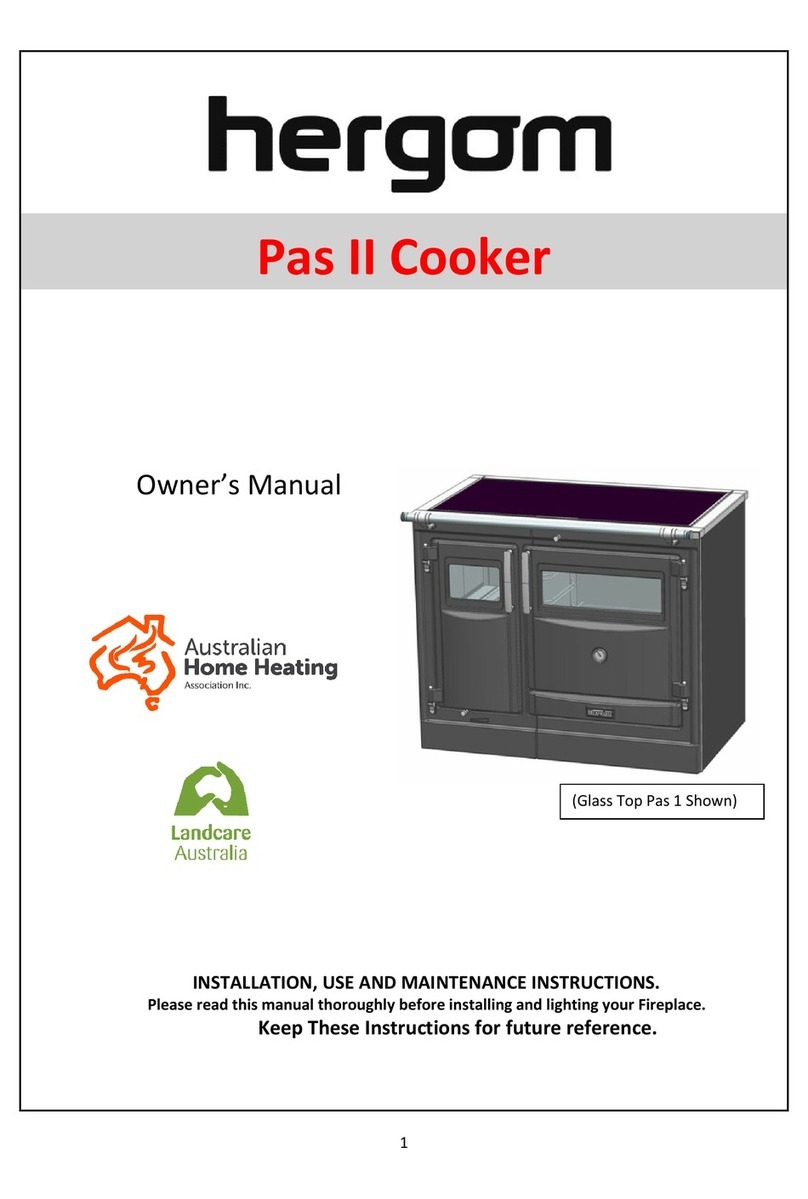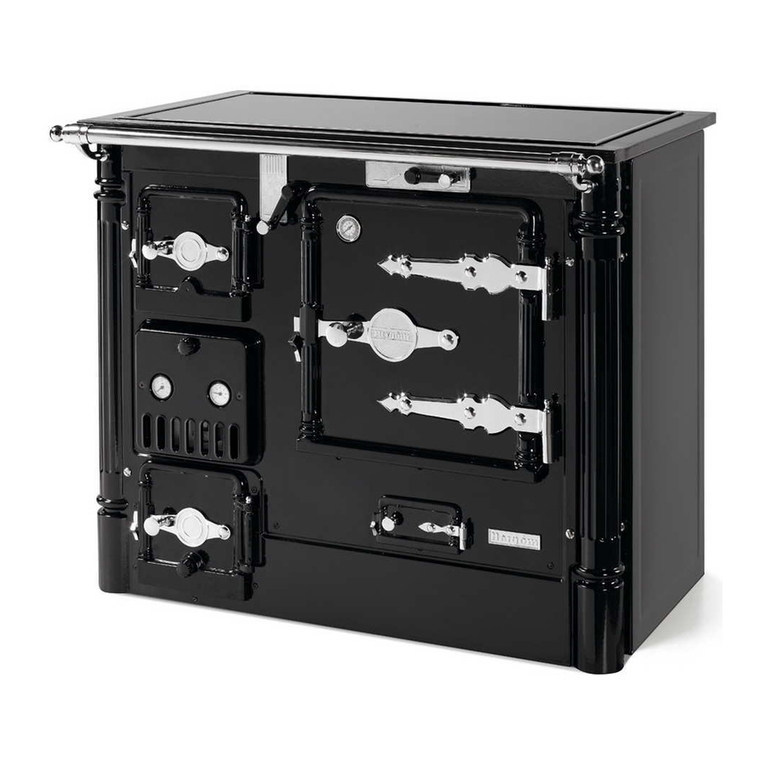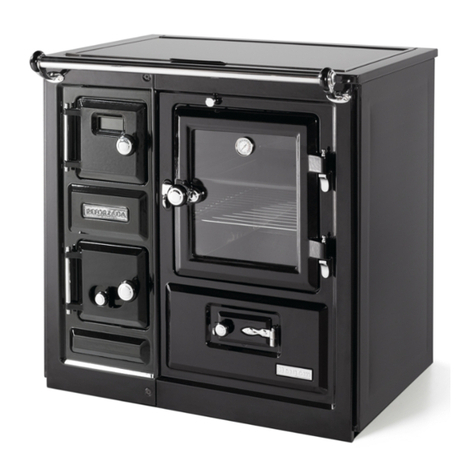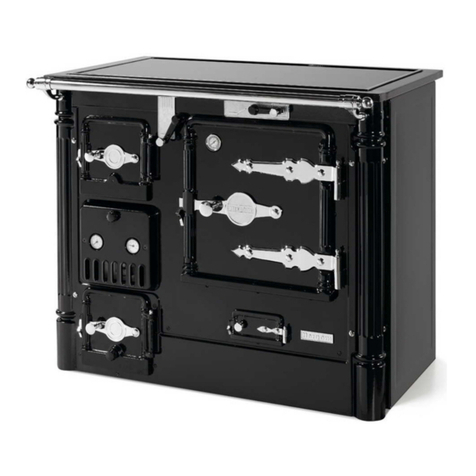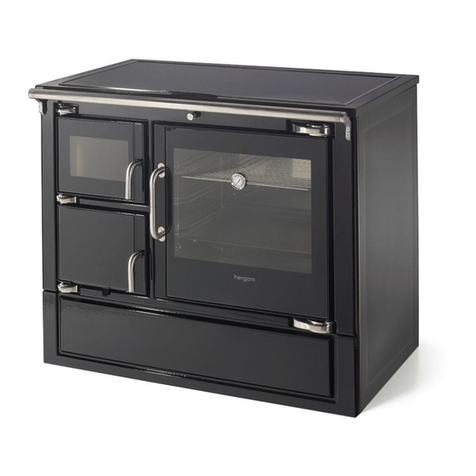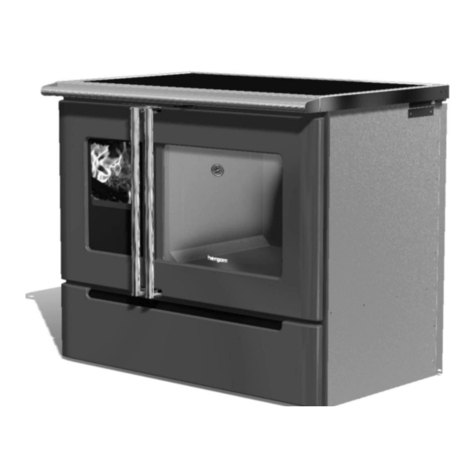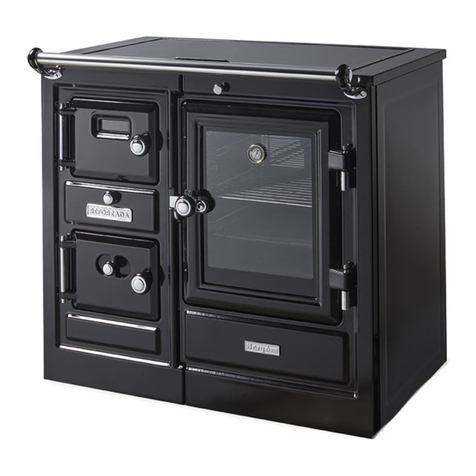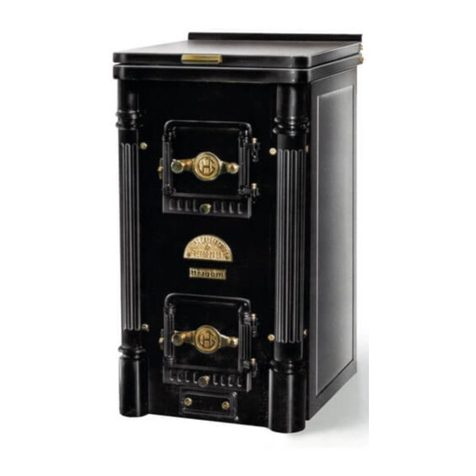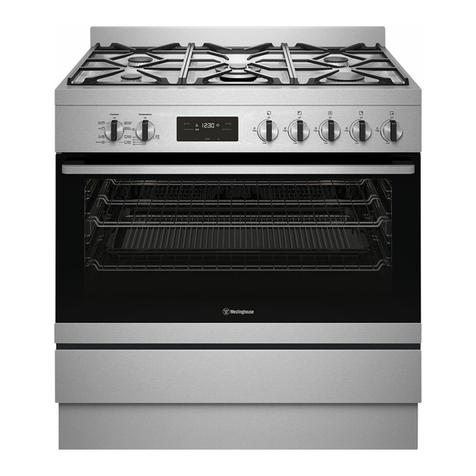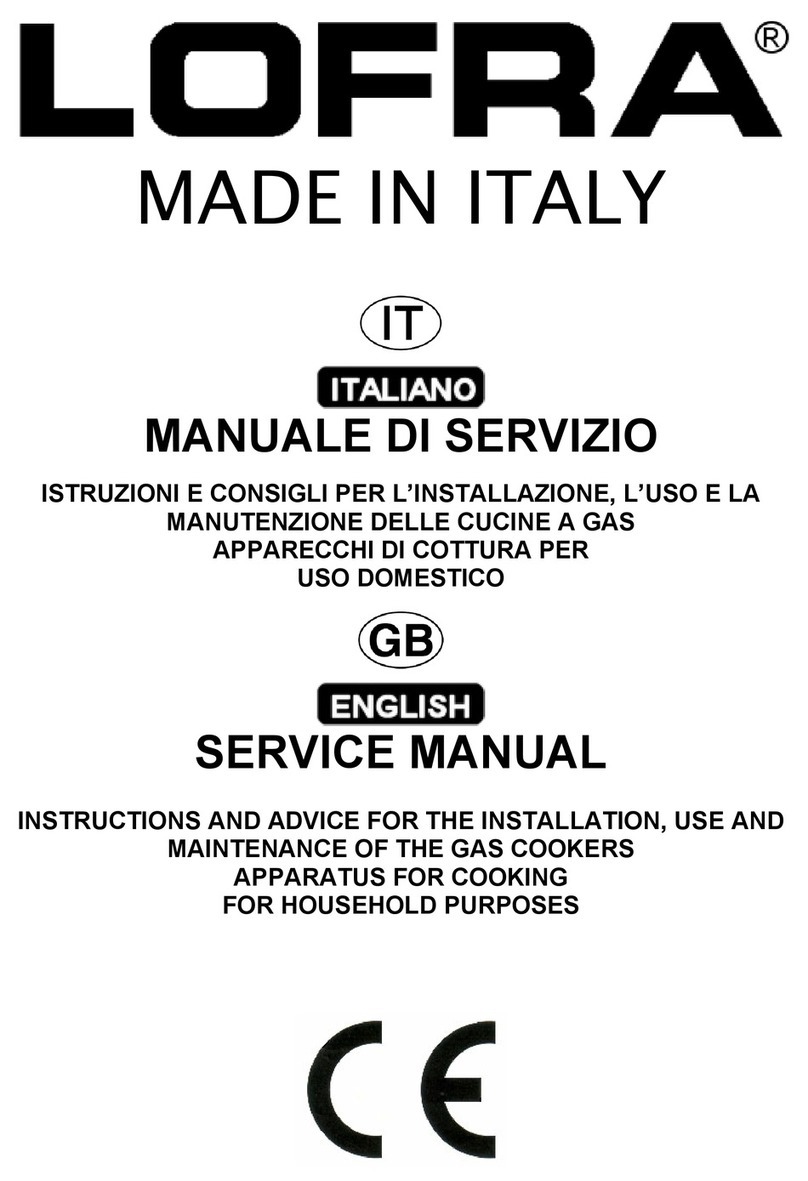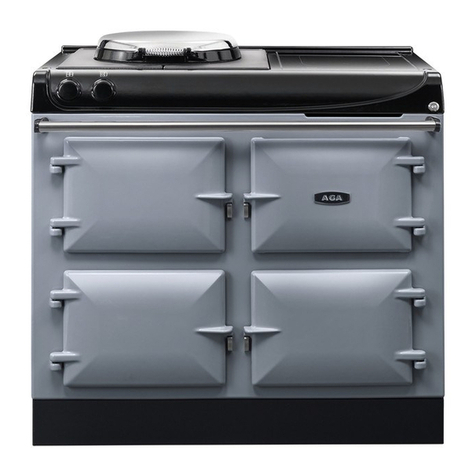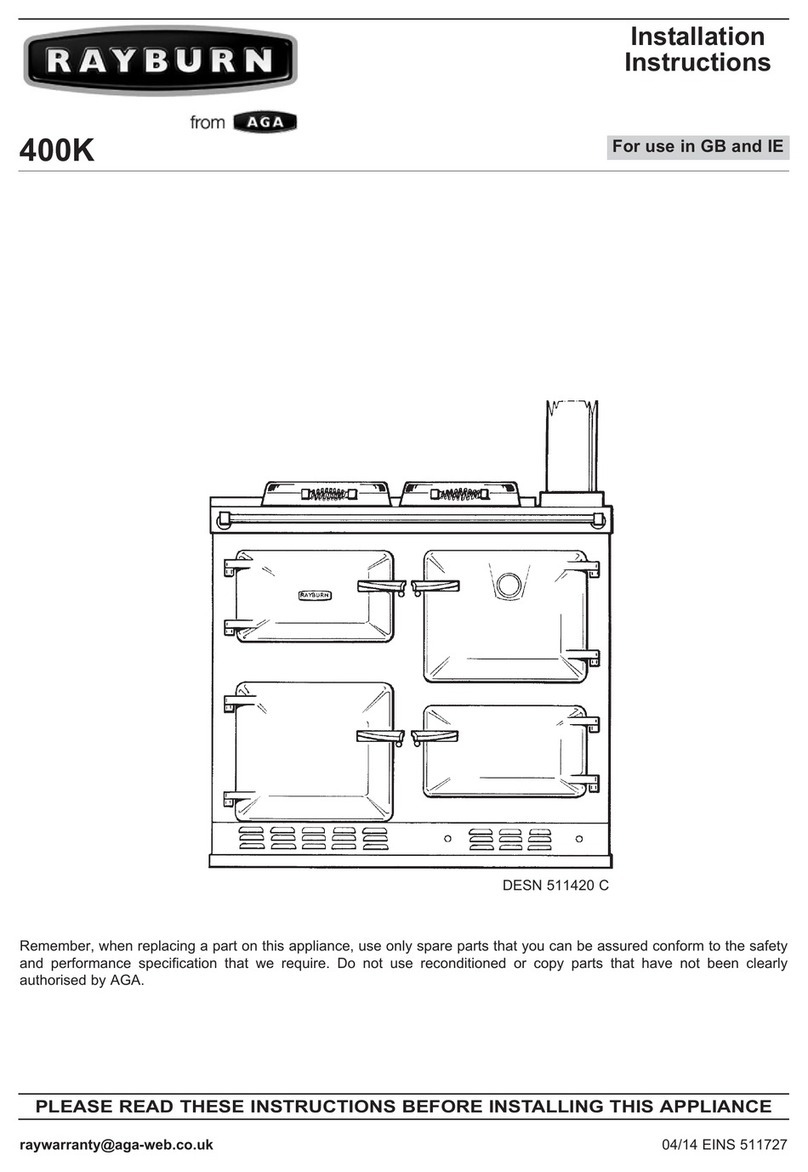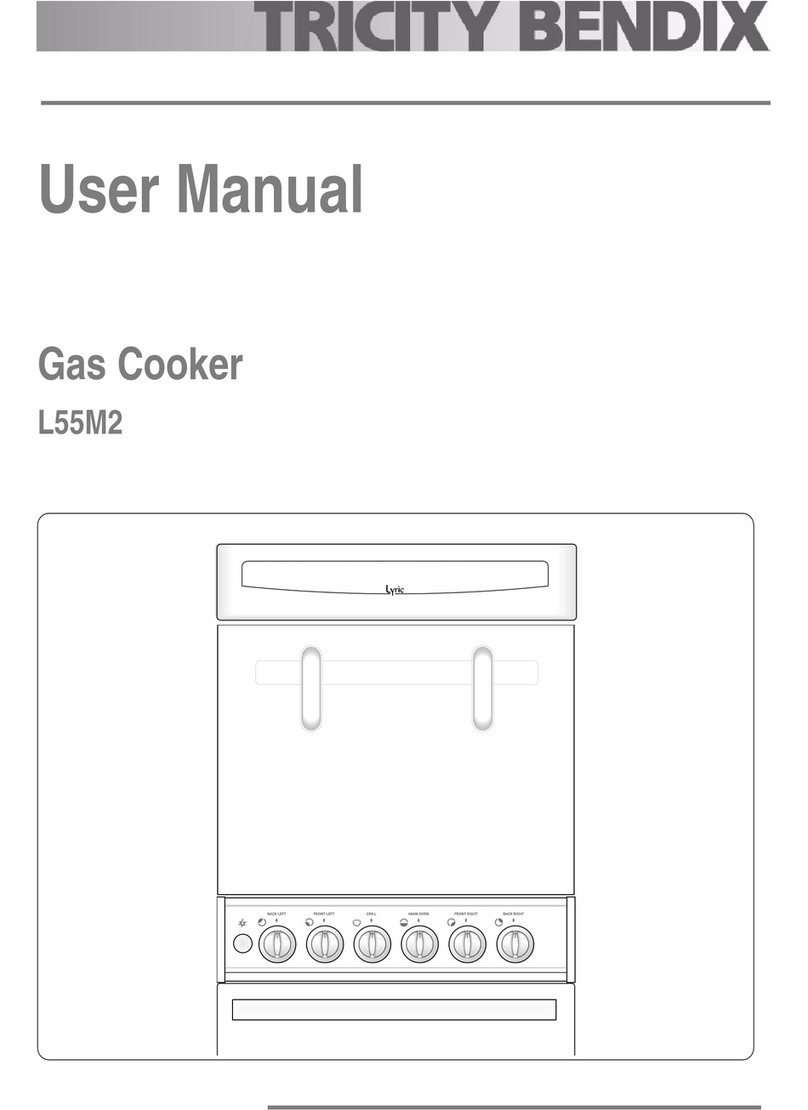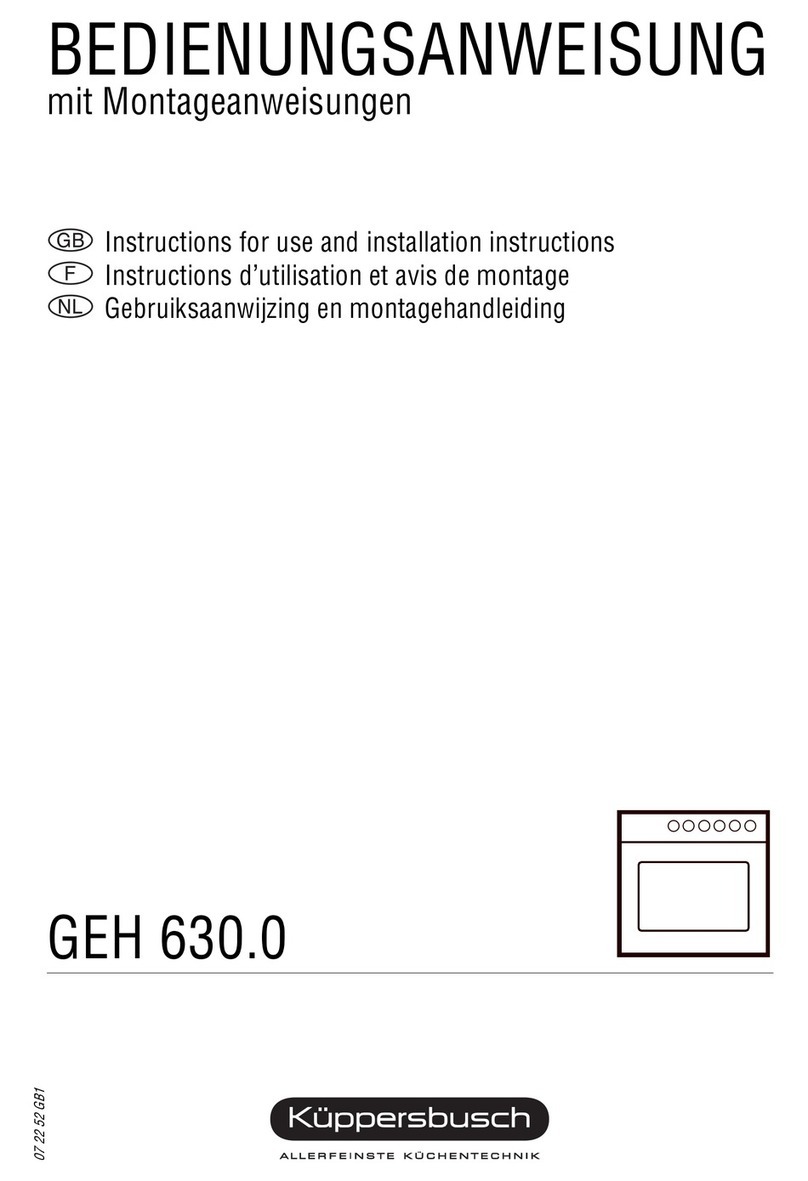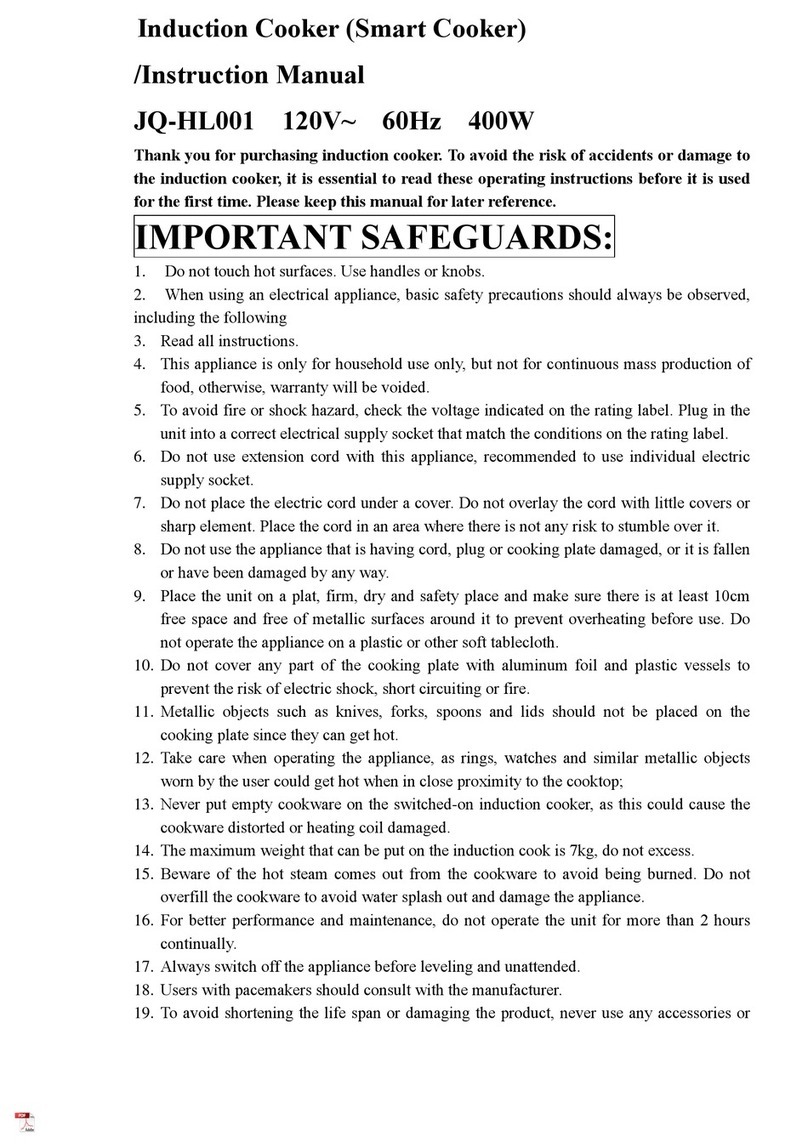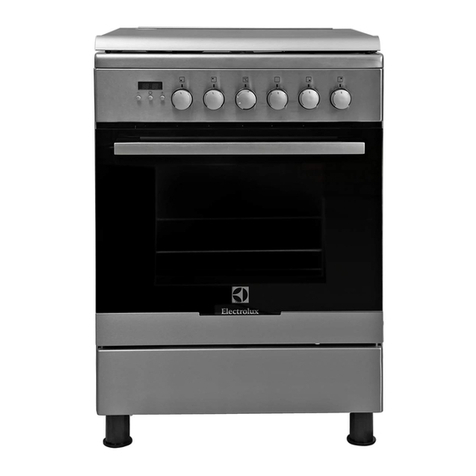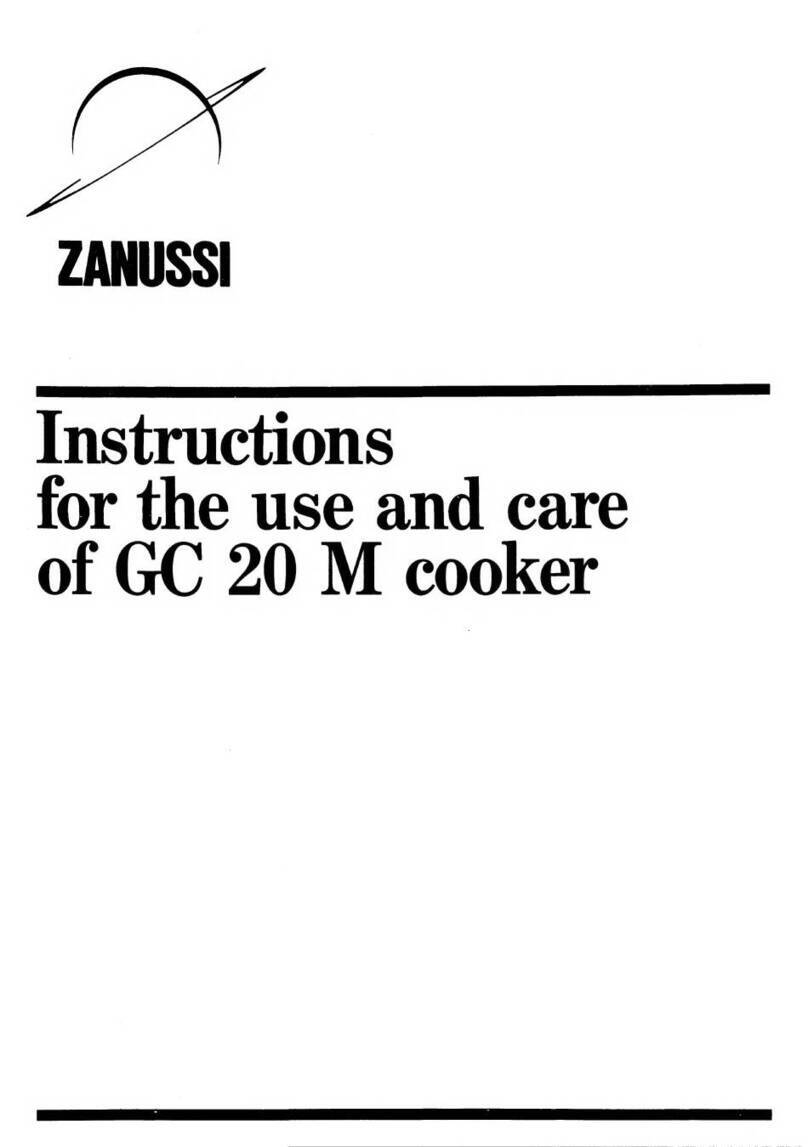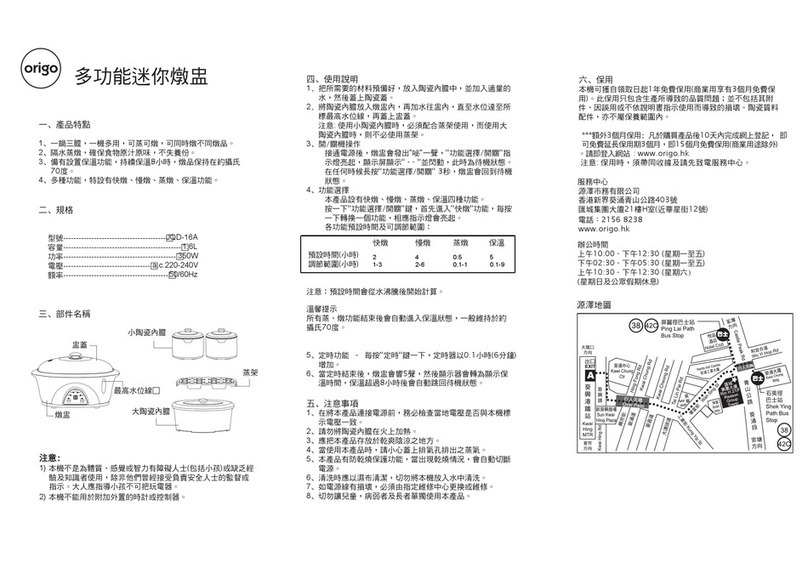38
• Stainless steel pipes.
• Elbow joints and covers for chimney construction.
V.- INSTRUCTIONS OF USE
Before using your cooker, please consult maintenance information on the hob
you have purchased. Chapter VI provides advice on maintenance.
Every cooker comes with a number of utensils, such as a poker and a scraper to clean
the ash pan and the smoke outlet via the soot cover located below the oven.
Before lighting the cooker, please check that the smoke conduit is perfectly clean in
order to obtain appropriate draw.
The iron grill fused in the transport goes located inside the ashtray drawer, to place it
in the hole that has the reserve of refractory of the fire box.
When lighting the cooker, close the wood oven door, open the primary air valve by
turning the handle and the chimney valve by pulling the brass lever located above the
oven door.
Once a regular combustion level has been achieved, close the direct chimney valve by
moving the brass lever to its normal position.
Regulate draw by means of the primary air valve. Take into account that excessive
draw will lead to greater coal or wood consumption and to the overheating of the top.
Never fill the combustion chamber will fuel completely or leave the ash pan cover
open.
Do not place wood or coal near the door.
Recommended chimney draw is 1.5 mmca. In order to control the operation of the
cooker and to avoid extremely powerful combustion, a 12 gap grille is supplied.
If, once you have installed the cooker, you are unable to reach the correct
performance temperature, open more gaps on the grille until you obtain the necessary
chimney draw.
Always control oven temperature by means of the thermometer installed on the door.
If the temperature should reach 250ºC (Yellow area on the thermometer), do not add
further fuel, close the air admission valve to the ash pan and, if necessary, open the
door to the wood oven to reduce combustion.
Any overheating of the cooker, indicated by oven temperature exceeding 300ºC (red
area on the thermometer), may lead to the deterioration of the hob.
Cooking will take less time if the bottoms of pots, pans and other utensils are
perfectly flat.
1.- Lighting up for the first time
We recommend a slow fire for 3 to 4 hours when lighting-up for the first time. This
will help stabilise the different components and avoid any possible breakages.














